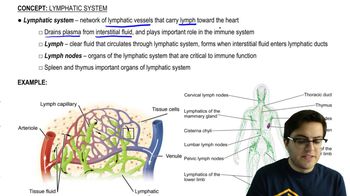Compared with a smaller cell, a larger cell of the same shape has
a. Less surface area
b. Less surface area per unit of volume
c. The same surface-area-to-volume ratio
d. A smaller cytoplasm-to-nucleus ratio
 Verified step by step guidance
Verified step by step guidance Verified video answer for a similar problem:
Verified video answer for a similar problem:



 7:47m
7:47mMaster Surface Area to Volume Ratio with a bite sized video explanation from Jason
Start learning